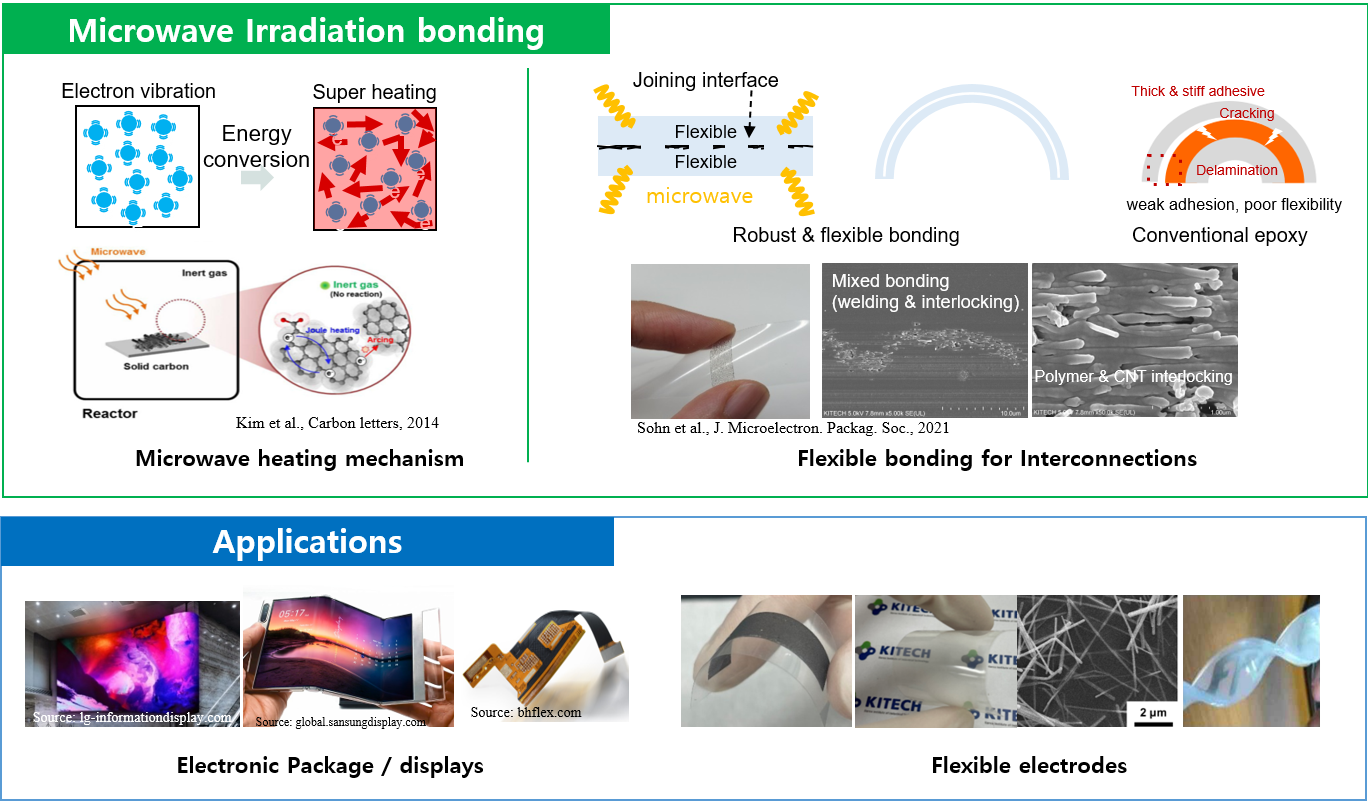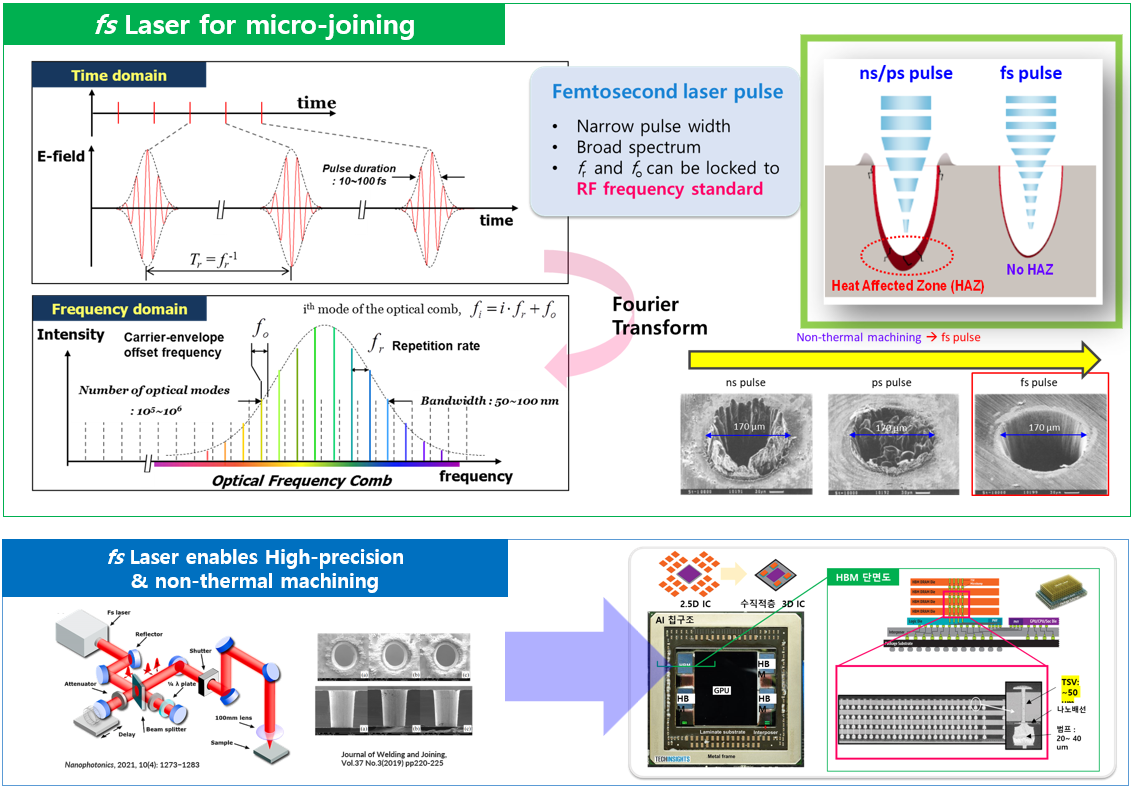Research
Advanced joining process technology
Microwave irradiation bonding
Microwave-based bonding technique includes new materials and processes for precise, low-damage interconnection for advanced packages.

Introduction
This technology includes materials, processes, and equipment technologies for joining electronic package components through microwave irradiation. The mechanism is to cause local heating by utilizing metals or organic materials which react with microwaves, so that reliable joints are realized faster, stronger, and without thermal damage compared to the existing thermal bonding process. Research on the development of composite materials that increase the reactivity and permeability of microwaves and bonding processes for each components are being conducted. Microwave bonding technology can also be applied to flexible applications, and the research is focused on joint strength, flexibility, and the usability of flexible electrodes.
Femtosecond laser technology for micro-joining
The technology involves integrating ultrafast femtosecond lasers with a pulse width on the order of '1,000 trillionths of a second' into micro-joining processes

Introduction
Femtosecond laser generates ultra-short pulses lasting 10-15 of a second, making them high-performance laser systems for precision microprocessing. These lasers offer high pulse repetition rates and average power output, providing precise control through a non-thermal mechanism that differs from conventional heat-based processing. As a result, they find applications in various fields where ultrafine processing is required, such as optical component manufacturing, semiconductor fabrication, and medical device production. Femtosecond lasers minimize material damage while enabling high-precision microprocessing, making them indispensable tools in the hands of experts in the field.